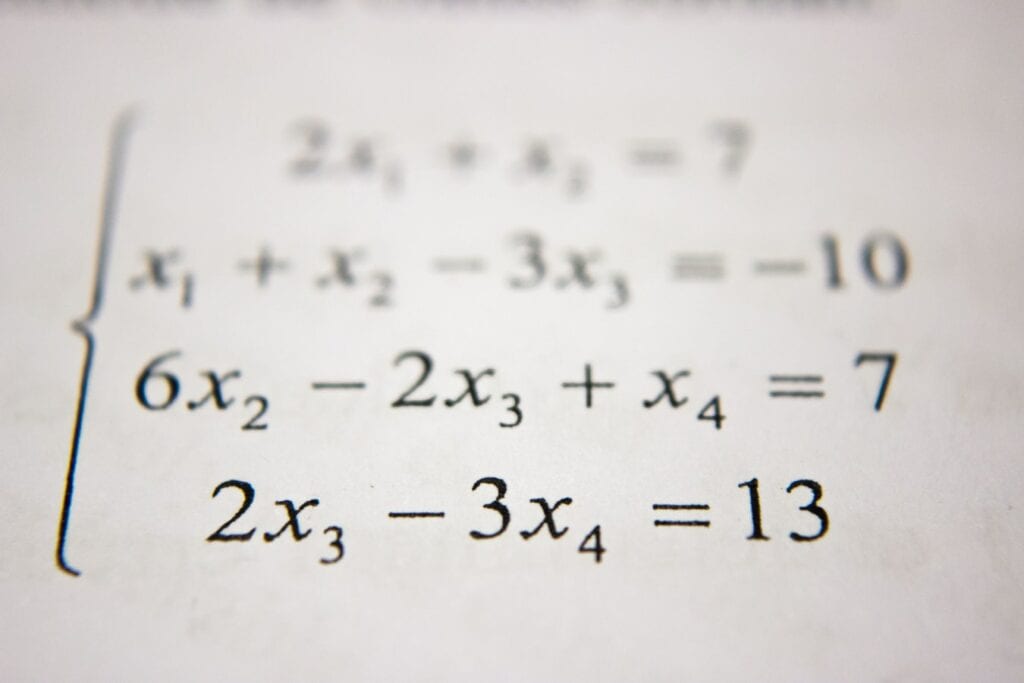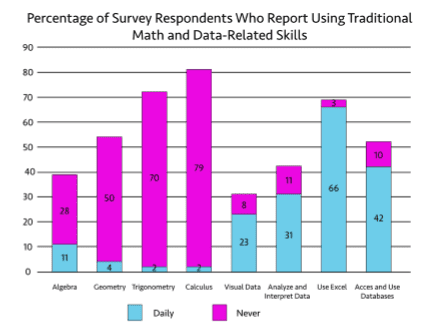
The high-school math curriculum in the U.S. predates the age of modern computers.
Having one child go through high school and now witnessing two more actively involved with high school classes, it occurred to me that they are still being taught the same mathematics curriculum when I attended high school some years ago. This felt strange to me, especially working in the business and technology fields for most of my career, including my current home at a dynamic technology company that develops physics-based software for customers around the world.
Because my place of work employs a diverse set of very talented engineers, and with a proclivity toward aerospace engineers, the math used in their daily work is complicated and needed for the jobs they do. But this is a particular example of what is required in order to perform their job responsibilities.
What’s troublesome for me is that those supporting other job functions use different math tools and software applications that have minimal, if anything, to do with what my children are learning in school. And this is amplified outside of specific math centric industries like the aerospace industry.
When researching this further, it was quite surprising to learn that the same algebra, geometry, and calculus classes were put into the U.S. high school curriculum during the 1800s. That’s right, the 1800s!
Since then, the math taught in U.S. schools hasn’t materially changed since the late 1950s. Some write that Eisenhower-era policymakers believed this curriculum would churn out the best rocket scientists to work on special projects during the Cold War.

It has been 50 years since the U.S. landed men on the Moon for the first time in a mission that defined an era. Today’s smartphone technology has advanced to the point that what people hold in their hands every day has more computing power than that extraordinary first Moon landing.
Looking at data between 1990 and 2009, it shows that only 16 percent of high school graduates completed calculus. This raises an important question: can we continue to teach algebra and geometry to students in preparation to take calculus when so low of a percentage take the course? Can we continue to use the same curriculum based on the 1800s framework to learn mathematics when more real-world math is needed in today’s modern age?
A survey conducted by “Freakonomics” podcast listeners, a group more weighted towards higher-income professionals — revealed what many already surmise: workers are not using algebra, geometry, trigonometry, or calculus but disciplines of mathematics that is much more critical and practical to their lives — data science. As the chart below highlights, there is a vast disconnect to the math that was taught versus what is being used by professionals in their jobs. Only 2 percent use integrals or derivatives, which are the foundational building blocks of calculus versus 66 percent work with analytical software like Microsoft Excel on a daily basis.

Source: https://www.youcubed.org/wp-content/uploads/2019/10/Are-we-teaching-the-wrong-math.pdf
In addition to the increasing “data science” based professions, students would enjoy the learning of these disciplines. So instead of studying and learning abstract methods that they can’t seem to connect with their future, they are given real, complex, and practical problems to solve — issues about the environment, software applications for space travel, blockchain technology, and about health and nutrition to name a few.
What if a proposal was generated to modify the curriculum to put data and its analysis at the center of high school mathematics? Or a motion where every high school student should graduate with an understanding of data, spreadsheets, and the difference between correlation and causality?
Furthermore, teaching students to make data-based arguments will equip them with the necessary critical-thinking skills they are learning today through algebraic proofs, but also give them more pragmatic skills and discipline for navigating our increasingly data-rich world.
According to research, seven of the ten fastest-growing job categories in the United States are data-centered — which is an incredible 90% of the data ever created by humanity emerging in just the last two years.

And if that isn’t enough to convince you, then get ready to fall more behind other countries that are moving much faster than the U.S. in establishing a more practical and modern mathematical curriculum.
Take, for instance, the Program for International Student Assessment, or PISA. It measures how effectively countries are preparing students for the mathematical demands of the 21st century. Last month, PISA released a mathematics framework that guides the assessment — interestingly enough, “data literacy” is central to this framework. In contrast, U.S. high school students learn algebra and geometry — and are sadly underprepared for the modern world.
For this to change, influencers, decision-makers, parents, and educators across the country will need to prioritize modernizing math at a national level and explore changes needed to arm our students with the mathematics and the knowledge of data analytics to solve the world’s most pressing problems for this 21st century.
Now, I’m not suggesting that we abandon the current math curriculum, but emphasize the integration of “data literacy” components and lessen other current subject areas into both the math and science disciplines.
I believe our teachers in this country can more than handle this challenge and excel at doing so. Not only that, how more energized would the classroom be while having students excited, engaged, and looking forward to their future with real-world applicability.
Thank you for Reading!
The opinions expressed here are my own and do not reflect the official position of my current or prior employers or its partners or customers.
